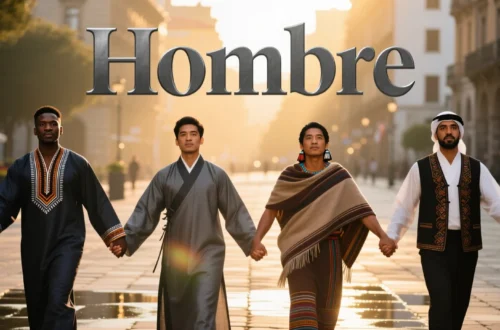Picture a lively family gathering in Naples, where a grandmother lovingly calls her grandchild “grassottello,” a playful nod to their chubby cheeks. Across the world, the word for “fat” carries more than a physical description—it reflects cultural attitudes toward body image, health, and affection.
Whether it’s a gentle tease in a Mexican mercado with “gordito” or a respectful term in a Nigerian village, the term for “fat” reveals how societies view bodies and beauty.
Let’s explore how this word is expressed globally and what it tells us about the diverse ways people perceive physicality.
Reference Table: “Fat” in Different Languages
| Language | Word/Phrase | Cultural/Linguistic Insight |
|---|---|---|
| French | Gros | Used for “fat” or “big,” often neutral but can be affectionate or critical. |
| Spanish | Gordo | Means “fat,” often used endearingly as “gordito” in Latin America. |
| Italian | Grassottello | A playful, affectionate term for “chubby,” common for children. |
| German | Dick | Means “thick” or “fat,” straightforward and context-dependent. |
| Mandarin | Pàng (胖) | Means “fat,” can be affectionate or critical based on tone. |
| Hindi | Mota | Means “fat” or “stout,” used casually, sometimes affectionately. |
| Japanese | Futoi (太い) | Means “thick” or “fat,” often used for objects or people contextually. |
| Korean | Ttungttunghan (뚱뚱한) | Means “chubby,” often softened to avoid offense. |
| Arabic | Samīn (سمين) | Means “fat,” used neutrally across 20+ countries, sometimes positively. |
| Swahili | Nene | Means “fat” or “plump,” often positive, linked to health in East Africa. |
| Zulu | Khuluphele | Means “plump,” associated with prosperity in South Africa. |
| Yoruba | Sànra | Means “fat,” often tied to wealth and well-being in Nigeria. |
| Maori | Momona | Means “fat” or “plump,” viewed positively as a sign of health. |
| Hawaiian | Puʻipuʻi | Means “chubby,” often affectionate, tied to aloha’s warmth. |
| Cherokee | Galvquodi | Means “large” or “fat,” used neutrally in Native American contexts. |
European Languages: Body Talk with Nuance
European languages express “fat” with terms that balance description and cultural sentiment. For instance, in French, “gros” means “fat” or “big” and is used neutrally, but affectionately as “mon gros” in close relationships. Meanwhile, Spanish uses “gordo,” often softened to “gordito” in Spain or Latin America, where it’s a term of endearment for loved ones. Additionally, Italian favors “grassottello,” a playful word for “chubby,” especially for children, reflecting Italy’s family-centric warmth. In German, “dick” (thick or fat) is direct, used in casual or critical contexts, aligning with Germany’s straightforward communication. Thus, European terms range from affectionate to pragmatic, shaped by cultural views on body image.
Asian Languages: Diverse Views on Physicality
Asia’s linguistic diversity shapes varied terms for “fat,” reflecting attitudes toward health and beauty. For example, in Mandarin, “pàng” (fat) is used casually, sometimes affectionately for children, but can be critical in health-conscious China. In Hindi, “mota” (fat or stout) is common in India, often a lighthearted tease among friends. Similarly, Japanese uses “futoi” (thick or fat), applied to objects or people, with a neutral tone in casual settings. In Korean, “ttungttunghan” (chubby) is softened to avoid offense, reflecting South Korea’s sensitivity to body image. Finally, Arabic’s “samīn” (fat), used in over 20 countries like Egypt and Iraq, is often neutral or positive, linked to prosperity in some contexts. These terms show Asia’s range, from playful to cautious expressions.
African Languages: Plumpness as Prosperity
In African languages, “fat” often carries positive connotations tied to wealth and health. For instance, Swahili, spoken in over 20 countries like Kenya and Tanzania, uses “nene” (fat or plump), a term that historically signaled good health and abundance. In Zulu, “khuluphele” (plump) in South Africa is associated with prosperity, often praised in social gatherings. Similarly, Yoruba’s “sànra” (fat) in Nigeria links plumpness to well-being, reflecting cultural values of community and vitality. These terms, used in vibrant markets or family events, emphasize positive associations with larger body sizes across African cultures.
Indigenous & Island Languages: Health and Harmony
Indigenous and island languages express “fat” with warmth, often tying it to health. For example, Maori in New Zealand uses “momona” (fat or plump), viewed positively as a sign of vitality and abundance. In Hawaiian, “puʻipuʻi” (chubby) is affectionate, often used with aloha’s warmth for loved ones. Similarly, Cherokee’s “galvquodi” (large or fat) is neutral, used in Native American communities to describe physicality without judgment. In Samoan, “lapoa” (large or fat) reflects the Pacific’s communal view, where larger bodies are celebrated as healthy. Across these cultures, from New Zealand to the Cherokee Nation, “fat” is often a positive trait, tied to shared values of well-being.
Cultural Insights: The Evolution of Body Language
Words for “fat” have evolved with cultural attitudes toward bodies. In ancient Arabic texts, “samīn” was linked to wealth, a view still present in some Middle Eastern cultures. In African traditions, terms like “nene” reflect historical associations of plumpness with fertility and prosperity. Moreover, in Asia, words like “pàng” have shifted from neutral to cautious usage with modern health trends. In Europe, terms like “gordo” carry both affection and critique, shaped by shifting beauty standards. These words carry centuries of meaning, from medieval feasts celebrating abundance to modern debates on body positivity, uniting diverse views on physicality.
Proverbs and Sayings: Wisdom of Body and Beauty
- French: “Un corps rond, un cœur profond.” (A round body, a deep heart.) – Ties physicality to emotional depth.
- Hindi: “Mota dil, mota pyar.” (Big heart, big love.) – Links larger bodies to generosity.
- Swahili: “Nene ni afya, afya ni mali.” (Plumpness is health, health is wealth.) – Celebrates body size as vitality.
- Japanese: “Futoi karada, yasashii kokoro.” (A thick body, a kind heart.) – Associates size with kindness.
- Yoruba: “Sànra ni idunnu.” (Fatness is joy.) – Connects plumpness to happiness.
FAQs
Why do some words for “fat” sound similar?
Shared linguistic roots (e.g., Indo-European “gros” and “gordo”) or cultural exchanges (e.g., Arabic’s “samīn” in Swahili) create similarities.
What’s the oldest term for “fat”?
Terms like “píng” in ancient Chinese (circa 200 BCE) or Latin’s “crassus” (circa 1st century BCE) are among the earliest for “fat.”
How do cultures shape the term’s use?
In collectivist cultures (e.g., African, Indigenous), “fat” often signals health and wealth, while individualistic cultures (e.g., European) may use it critically or affectionately.
Conclusion
From “gordo” in Spain to “nene” in Tanzania, the word for “fat” weaves a global story of body and culture. Each term, whether the affectionate “puʻipuʻi” in Hawaiian or the prosperous “sànra” in Yoruba, reflects unique values while celebrating our shared humanity. Consequently, these words remind us that physicality is more than appearance—it’s a cultural lens on health, beauty, and connection. How do you say “fat” in your language, and what does it mean to you? Share your thoughts below—we’re excited to hear your perspective!






